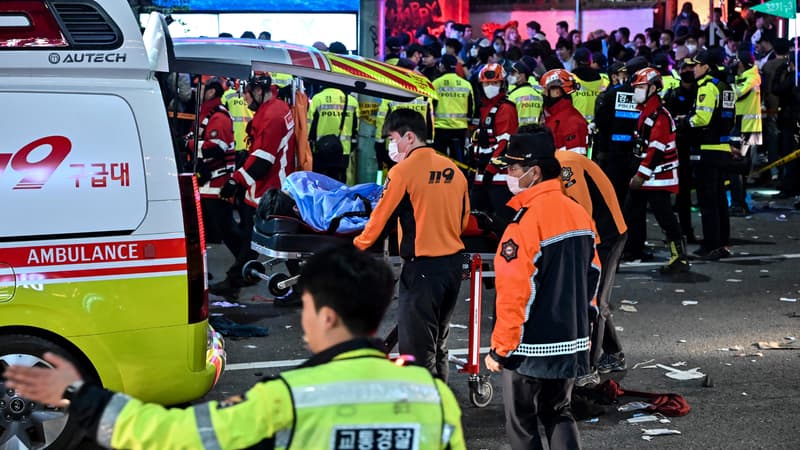The figure is enough to make you dizzy. More than 150 people were killed in a mass movement that occurred on Saturday in Seoul, South Korea, on the sidelines of a Halloween demonstration. Beyond the scare, this issue questions: how can a stampede cause such a high number of deaths?
Asphyxiation leading cause of death
The crowd was dense that night in the streets of the Korean capital, 100,000 people came out to celebrate Halloween with great fanfare for the first time in more than two years of the Covid-19 pandemic.
Under the influence of panic, the stampede turned into a tragedy. Doctors say most of the victims died of suffocation, unable to breathe as they were crammed into narrow alleyways.
The phenomenon may come as a surprise, but when a crowd gets very dense, it quickly becomes difficult to move around and therefore get out, he explains. The conversation.
Online media develop that, according to researcher Dirk Helbing, theorist of the “tremor of the crowd”, as soon as the critical threshold of 6 people per square meter is reached, the slightest physical contact causes a stampede. The space to inhale is reduced at the same time, causing breathing difficulties.
Hong Ki-Jeong, an emergency doctor who intervened in the act, returns to this phenomenon with the South Korean press agency YNA. “Most people can’t catch their breath due to deep suffocation,” she says.
Resuscitation sometimes “impossible”
Some people find themselves suffocated by the pressure of the crowd, while others stumble and get trampled. Trapped on the ground, they no longer have enough room to breathe properly.
“As people try to get up, their arms and legs get tangled up. The blood supply to the brain begins to reduce, ”describes Dr. G. Keith Still, with the Associated Press (AP).
Although many people were treated by the emergency services and received cardiac massage, in some cases, according to the South Korean doctor, resuscitation is “impossible”.
In fact, some victims were deprived of oxygen for a significant period of time, leading to irreversible brain damage. “This largely prevented them from rescuing them,” he explains.
little time to intervene
The brain, supplied by many blood vessels, actually requires a significant supply of oxygen, according to the Brain Institute. It is not well fed, so death can occur very quickly.
“It only takes 30 seconds to lose consciousness and it only takes about 6 minutes to develop compressive or restrictive asphyxia.”
If the relief does not intervene quickly, the balance can go up quickly.
Therefore, only prevention can work to prevent this kind of drama during big gatherings. Patrick Hertgen, an emergency firefighter and advisor to the French National Federation of Firefighters, believes, in the columns of Le Parisien, that strict measures must be put in place ranging from “access control”, to the establishment of a ” maximum number of people per m² in a (specific) location”.
“The government will rigorously investigate the cause so that such an accident does not happen again in the future,” promised the South Korean president on this issue.
Source: BFM TV


